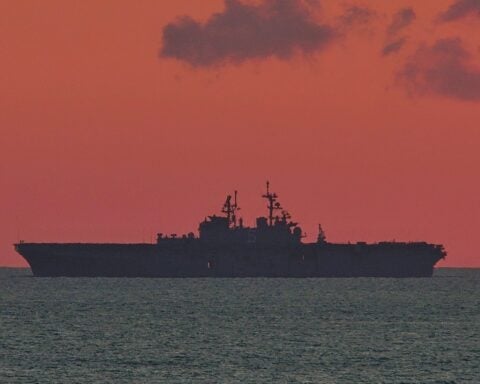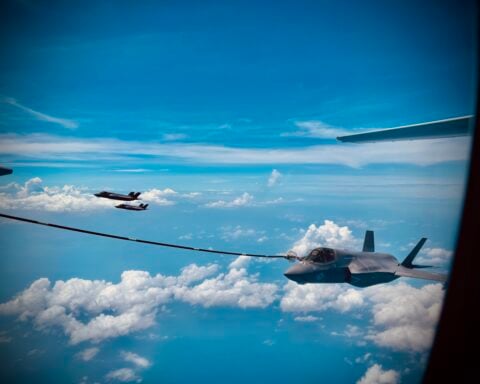The following is the May 31, 2024, Congressional Research Service In Focus report, Nuclear-Armed Sea-Launched Cruise Missile (SLCM-N).
From the report
Congress and the executive branch have debated the merits of a new nuclear-armed sea-launched cruise missile (SLCM-N) since the weapon was first proposed by the Trump Administration in 2018. The Biden Administration proposed cancelling the SLCM-N program following its 2022 Nuclear Posture Review (NPR), a periodic assessment of U.S. nuclear policy. Congress has provided continued funding for the SLCM-N and its warhead; the FY2024 National Defense Authorization Act (NDAA) requires the executive branch to ensure SLCM-N initial operational capability (IOC). Since the FY2024 NDAA, the Administration has taken steps to begin SLCM-N program implementation.
Background
The U.S. Navy first deployed a nuclear-armed sea-launched cruise missile in the mid-1980s, when it placed the TLAM-N—a nuclear-armed version of the Tomahawk land-attack cruise missile—on surface ships and attack submarines. With a range of 2,500 kilometers (about 1,550 miles), the missiles were not included in the limits in U.S.-Soviet arms control agreements.
In 1991, at the end of the Cold War, President George H.W. Bush announced that the United States would withdraw all land-based tactical nuclear weapons (those that could travel less than 300 miles) from overseas bases and all sea-based tactical nuclear weapons from surface ships, submarines, and naval aircraft. The Navy withdrew the TLAM-N missiles by mid-1992 and eliminated the nuclear mission for U.S. surface ships, but retained the option to return the TLAM-N to attack submarines. Some observers characterized this redeployment ability as demonstrating the credibility of U.S. defense commitments to allies in Asia.
In 2010, the Obama Administration recommended that the Navy retire the TLAM-N missiles. The 2010 NPR stated that “this system serves a redundant purpose,” as it was one of several weapons the United States could deploy in support of U.S. allies. The Navy completed the retirement of these missiles in 2013.
The Trump Administration reversed this decision, arguing in the 2018 NPR that a nuclear-armed sea-launched cruise missile (now known as SLCM-N) would provide the United States with a “non-strategic regional presence” that would address the “need for flexible and low-yield options.” SLCM-N was one of two systems that the 2018 NPR characterized as “modest supplements” that would “strengthen deterrence of regional adversaries” and assure U.S. allies. The other 2018 NPR-recommended system was a low-yield version of the W76 nuclear warhead (known as the W76-2) for the Trident D5 long-range submarine-launched ballistic missile (SLBM). The 2018 NPR stated that the W76-2 was an option for the “near-term,” while SLCM-N would be an option implemented over “the longer term.” The Navy deployed the W76-2 on the Trident D5 SLBM in 2019. At the same time, the Navy conducted an Analysis of Alternatives on the SLCM-N.
In its FY2022 budget request, the Biden Administration sought $5.2 million for Department of Defense (DOD) research and development work on the SLCM-N. It also requested $10 million for the National Nuclear Security Administration (NNSA) to study adapting the W80-4 nuclear warhead, intended for the Long-Range Standoff Weapon (LRSO) air-launched cruise missile, for delivery carried by the SLCM-N. The Administration also stated that it would review the program in the 2022 NPR.
The Biden Administration proposed cancelling the SLCM-N in the 2022 NPR, arguing that the missile was “no longer necessary” because of the W76-2 SLBM warhead’s “deterrence contribution.” The Navy’s FY2023 budget request eliminated funding for the SLCM-N, stating that the missile was “cost prohibitive and the acquisition schedule would have delivered capability late to need.”
Current Status
The Biden Administration did not include the SLCM-N in its FY2023, FY2024, or FY2025 budget requests. The Administration’s policy statements on the FY2023 and FY2024 NDAAs asserted that continuing the SLCM-N program “would divert resources and focus from higher modernization priorities.” Despite the Administration’s objections, Congress has provided continued funding for the missile and the associated warhead.
Download the document here.





